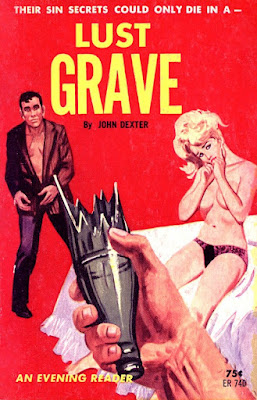Regular readers of this blog know that I’m a long-time fan
of The Shadow and have reviewed a number of the pulp novels over the years. I
recently had a chance to read THE SHADOWED CIRCLE #1, an old-fashioned fanzine
devoted to the character, and I had a great time with it.
Edited and published by Steve Donoso, with art and design by John Sies and
assistance from deputy editor Rebecca Robinson, THE SHADOWED CIRCLE #1 is an
impressive publication, starting off with a fine cover by John Jamilkowski. The
contents include an essay by Will Murray about some of the female villains
faced by The Shadow; this piece was squeezed out of the reprints from Sanctum
Publications by a lack of space, and it’s great to have it available. As the
leading expert on The Shadow, Murray’s work is always informative and
entertaining.
John L. French takes a look at the Shadow novels by Bruce Elliott, who replaced
longtime author Walter B. Gibson for a while late in the pulp’s run. These stories by
Elliott are almost universally reviled, with a common criticism being that the
character doesn’t even seem like himself. French comes up with an intriguing
theory to explain that. I’ve never read one of Elliott’s Shadow novels, and I
really ought to. I’ve read some of his other mystery novels that I liked quite
a bit.
Craig McDonald contributes an article about the only villains who faced The
Shadow in four separate novels, Shiwan Khan (created by Walter B. Gibson) and
Benedict Stark (created by Theodore Tinsley, who backed up Gibson on the series
for several years). I’ve read at least one of the Shiwan Khan novels, but I
don’t think I’ve read all of them. I’ve never read any of the novels featuring
Benedict Stark, and McDonald’s excellent article makes me think I need to do
that, too. Ah, if only there was more time in the day!
There’s also an interview with James Patterson, co-author of the recent Shadow
novel that puts a whole new spin on the character, and a lengthy review of that
book by Henry Lopez. I’ve never met Patterson, although I’m acquainted with
some of his co-authors, but everyone I know who has met him seems to think he’s
a wonderful guy. That’s certainly the way he comes across in this interview,
very affable, whether I agree with his take on The Shadow or not. (Brief
personal story: I have been in the same room with Patterson several times
without actually meeting him. At a mystery convention a few years ago, I
happened to be in the hotel lobby at six o’clock in the morning, and there he
was, sitting in a chair by himself reading a newspaper. I started to go up and
introduce myself to him, but then I thought, no, he looked so grateful to be
just sitting there with nobody bothering him, I couldn’t bring myself to do it.
So I went on my way.)
Rounding out this issue are articles about Gibson’s work on a Batman story (his
last published work), being a young fan of a pulp hero, short films featuring
The Shadow from the early Thirties (I’d never even heard of these!), cover
artwork from the pulp, and zombies in the radio show. It’s a very nice variety
of material and all well-written and interesting.
Fanzines such as this have really fallen by the wayside with the rise of the
Internet, but I read a bunch of them over the years, especially during the
Seventies, Eighties, and Nineties. Reading THE SHADOWED CIRCLE #1 was a
wonderful reminder of that time, as well as being an excellent publication in
its own right. I had an absolutely wonderful time with it. It’s available on
Amazon, or you can subscribe to it. All the details are available on the magazine’s Facebook page. If you’re a Shadow fan or a fan of pulp fiction in
general, I give it a very high recommendation.


























